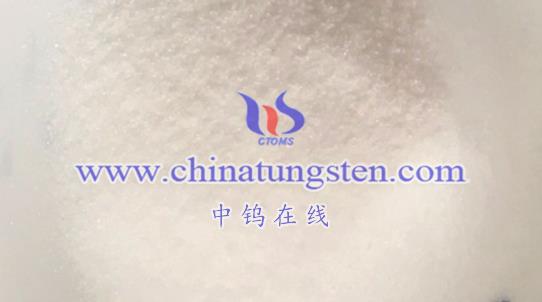The emergency handling methods of ammonium metatungstate hydrate mainly involve personnel safety, environmental protection and substance handling. The following are the detailed emergency handling methods, which are expressed and summarized in points according to a clear structure:
- Personnel safety
– Immediate evacuation: In the event of a spill or accident, first ensure the safety of personnel by immediately evacuating them to a safe area.
– Personal Protection: For personnel who need to enter the spill area for emergency response, they should wear appropriate personal protective equipment, such as protective clothing, gas masks, protective gloves and goggles.
- Environmental protection
– Prevent spreading: Take measures to prevent the spill from spreading to the surrounding environment, e.g. use of adsorbents, cofferdams, etc.
– Avoid entering sewers: Ensure that the spill does not enter sewers or drainage systems so as not to pollute water bodies.
– Control of ignition sources: Set up warning signs around the leakage area to prohibit smoking and open flames to prevent fire or explosion.
- Spill handling
– Small leaks:
o Use an adsorbent (e.g., activated carbon, sand, etc.) to cover and absorb the spill.
o Collect the adsorbent that has adsorbed the spill and place it in a special container.
– Medium and large spills:
o Dispose of the spill using a spill disposal kit, ensuring that personal and environmental protection is in place.
o Use large quantities of water for dilution and direct diluted wastewater into the wastewater treatment system.
o During disposal, take care to avoid contact between the spill and sources of ignition.
- Emergency Contact and Reporting
– Immediate Reporting: In the event of a spill or accident, report it immediately to a higher authority or emergency management.
– Contact fire and emergency services: If necessary, contact fire and emergency services in time to request professional assistance.
- Follow-up treatment
– Clean up the site: After the leak is controlled, clean up the site thoroughly to ensure that there is no residue.
– Waste Disposal: Dispose of the collected waste such as leakage and adsorbent in accordance with relevant regulations to avoid secondary pollution to the environment.
– Summarize experience: Summarize and evaluate the accident, analyze the cause of the accident and the shortcomings in the emergency treatment process, and put forward improvement measures to prevent similar accidents from happening again.
- Cautions
– In the process of handling, safety operation regulations and chemical handling norms should be strictly observed.
– Emergency response personnel should be professionally trained and have appropriate emergency response capability and safety awareness.
– During the process, attention should be paid to maintaining communication and collaboration with the emergency management department and other relevant departments to ensure the smooth progress of the emergency handling work.
More details of ammonium metatungstate product, please visit website: http://ammonium-metatungstate.com/
Please contact CHINATUNGSTEN for inquiry and order of ammonium metatungstate:
Email: sales@chinatungsten.com
Tel.: 86 592 5129595







